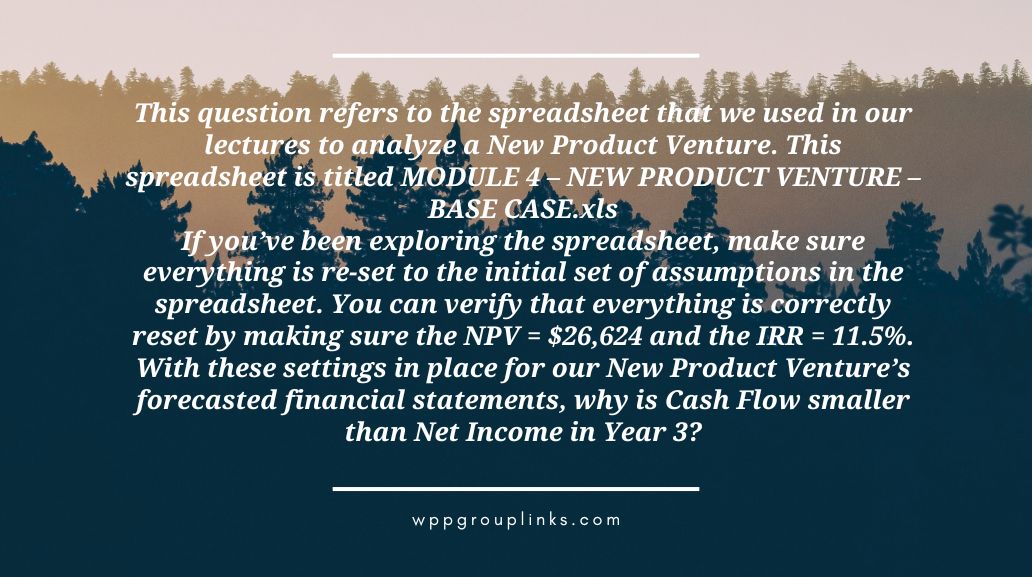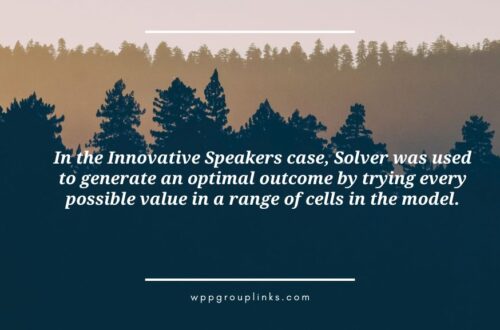
Q: This question refers to the spreadsheet that we used in our lectures to analyze a New Product Venture. This spreadsheet is titled MODULE 4 – NEW PRODUCT VENTURE – BASE CASE.xls
If you’ve been exploring the spreadsheet, make sure everything is re-set to the initial set of assumptions in the spreadsheet. You can verify that everything is correctly reset by making sure the NPV = $26,624 and the IRR = 11.5%. With these settings in place for our New Product Venture’s forecasted financial statements, why is Cash Flow smaller than Net Income in Year 3?
or
Q: This query relates to the spreadsheet we utilized to examine a new product venture within our lectures. The name of this file is MODULE 4-NEW PRODUCT VENTURE-BASE CASE.xls.
Make sure that everything is returned to the spreadsheet’s original set of assumptions if you have been examining it. You may confirm that everything has been reset successfully by confirming that the IRR is 11.5% and the NPV is $26,624. Why does cash flow in Year 3 fall short of net income when these parameters are in place for our New Product Venture’s projected financial statements?
- Because they have to pay taxes
- Because they’ve invested some of the cash in Working Capital
- Because Depreciation is not a Cash Flow
- Cash Flow is always smaller than Net Income





